March for Life: Abortion Opponents Raise Their Ambitions

© Kenny Holston/The New York Times

© Kenny Holston/The New York Times

© Nanna Heitmann for The New York Times

© Nanna Heitmann for The New York Times

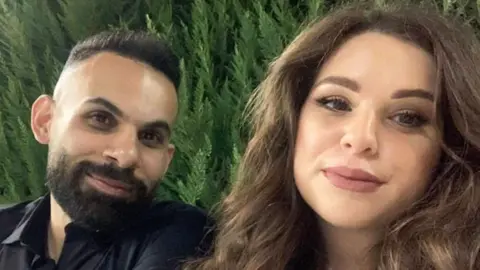 BBC
BBCJulia Ramadan was terrified - the war between Israel and Hezbollah was escalating and she'd had a nightmare that her family home was being bombed. When she sent her brother a panicked voice note from her apartment in Beirut, he encouraged her to join him in Ain El Delb, a sleepy village in southern Lebanon.
"It's safe here," he reassured her. "Come stay with us until things calm down."
Earlier that month, Israel intensified air campaigns against Hezbollah in Lebanon, in response to escalating rocket attacks by the Iran-backed armed group which had killed civilians, and displaced tens of thousands more from homes in northern Israel.
Ashraf was confident their family's apartment block would be a haven, so Julia joined him. But the next day, on 29 September, it was subject to this conflict's deadliest single Israeli attack. Struck by Israeli missiles, the entire six-storey building collapsed, killing 73 people.
The Israel Defense Forces (IDF) says the building was targeted because it was a Hezbollah "terrorist command centre" and it "eliminated" a Hezbollah commander. It added that "the overwhelming majority" of those killed in the strike were "confirmed to be terror operatives".
But a BBC Eye investigation verified the identity of 68 of the 73 people killed in the attack and uncovered evidence suggesting just six were linked to Hezbollah's military wing. None of those we identified appeared to hold a senior rank. The BBC's World Service also found that the other 62 were civilians - 23 of them children.
Among the dead were babies only a few months old, like Nouh Kobeissi in apartment -2B. In apartment -1C, school teacher Abeer Hallak was killed alongside her husband and three sons. Three floors above, Amal Hakawati died along with three generations of her family - her husband, children and two granddaughters.

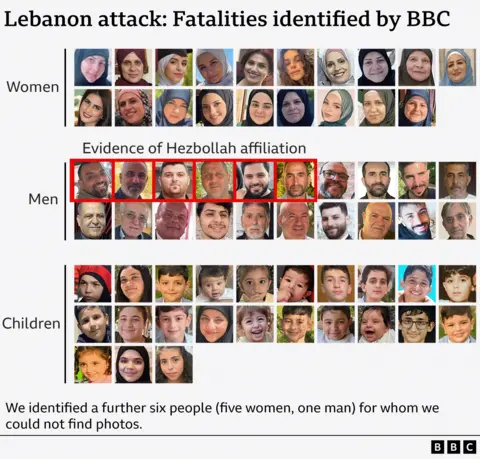
Ashraf and Julia had always been close, sharing everything with each other. "She was like a black box, holding all my secrets," he says.
On the afternoon of 29 September, the siblings had just returned home from handing out food to families who had fled the fighting. Hundreds of thousands of people in Lebanon had been displaced by the war.
Ashraf was in the shower, and Julia was sitting in the living room with their father, helping him upload a video to social media. Their mother, Janan, was in the kitchen, clearing up.
Then, without warning, they heard a deafening bang. The entire building shook, and a massive cloud of dust and smoke poured into their apartment.
"I shouted, 'Julia! Julia!,'" says Ashraf.
"She replied, 'I'm here.'
"I looked at my dad, who was struggling to get up from the sofa because of an existing injury to his leg, and saw my mother running toward the front door."
Julia's nightmare was playing out in real life.
"Julia was hyperventilating, crying so hard on the sofa. I was trying to calm her down and told her we needed to get out. Then, there was another attack."
Video footage of the strike, shared online and verified by the BBC, reveals four Israeli missiles flying through the air towards the building. Seconds later, the block collapses.
Ashraf, along with many others, was trapped under the rubble. He began calling out, but the only voice he could hear was that of his father, who told him he could still hear Julia and that she was alive. Neither of them could hear Ashraf's mother.
Ashraf sent a voice note to friends in the neighbourhood to alert them. The next few hours were agonising. He could hear rescuers sifting through the debris - and residents wailing as they discovered loved ones dead. "I just kept thinking, please, God, not Julia. I can't live this life without Julia."
Ashraf was finally pulled from the rubble hours later, with only minor injuries.
He discovered his mother had been rescued but died in hospital. Julia had suffocated under the rubble. His father later told him Julia's last words were calls for her brother.

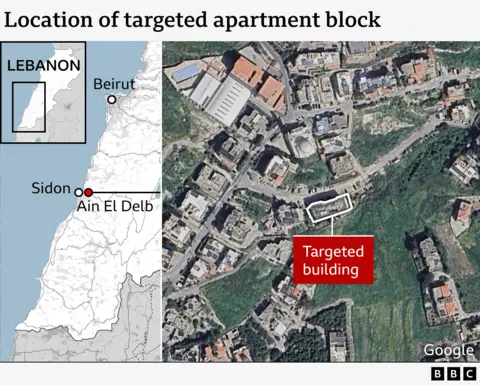
In November, a ceasefire deal was agreed between Israel and Hezbollah with the aim of ending the conflict. The deal gives a 60-day deadline for Israeli forces to withdraw from southern Lebanon and for Hezbollah to withdraw its forces and weapons north of the Litani River. As this 26 January deadline approaches, we sought to find out more about the deadliest single Israeli attack on Lebanon in years.
In the apartment below Julia and Ashraf's, Hawraa and Ali Fares had been hosting family members displaced by the war. Among them was Hawraa's sister Batoul, who, like Julia, had arrived the previous day - with her husband and two young children. They had fled intense bombardment near the Lebanon-Israel border, in areas where Hezbollah has a strong presence.
"We hesitated about where to go," says Batoul. "And then I told my husband, 'Let's go to Ain El Delb. My sister said their building was safe and that they couldn't hear any bombing nearby.'"
Batoul's husband Mohammed Fares was killed in the Ain El Delb attack. A pillar fell on Batoul and her children. She says no-one responded to her calls for help. She finally managed to lift it alone, but her four-year-old daughter Hawraa had been fatally crushed. Miraculously, her baby Malak survived.

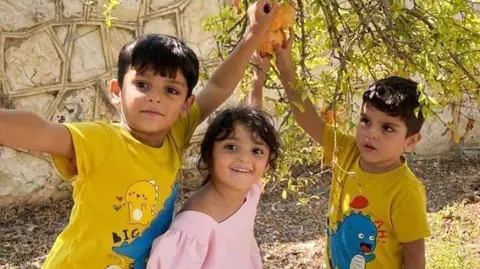 Fares family
Fares familyThree floors below Batoul lived Denise and Moheyaldeen Al-Baba. That Sunday, Denise had invited her brother Hisham over for lunch.
The impact of the strike was brutal, says Hisham.
"The second missile slammed me to the floor… the entire wall fell on top of me."
He spent seven hours under the rubble.
"I heard a voice far away. People talking. Screams and… 'Cover her. Remove her. Lift the stone. He's still alive. It's a child. Lift this child.' I mean… Oh my God. I thought to myself, I'm the last one deep underground. No-one will know about me. I will die here."
When Hisham was finally rescued, he found his niece's fiance waiting to hear if she was alive. He lied to him and told him she was fine. They found her body three days later.
Hisham lost four members of his family - his sister, brother-in-law and their two children. He told us he had lost his faith and no longer believes in God.
To find out more about who died, we have analysed Lebanese Health Ministry data, videos, social media posts, as well as speaking to survivors of the attack.
We particularly wanted to interrogate the IDF's response to media - immediately following the attack - that the apartment block had been a Hezbollah command centre. We asked the IDF multiple times what constituted a command centre, but it did not give clarification.
So we began sifting through social media tributes, gravesites, public health records and videos of funerals to determine whether those killed in the attack had any military affiliation with Hezbollah.
We could only find evidence that six of the 68 dead we identified were connected to Hezbollah's military wing.
Hezbollah memorial photos for the six men use the label "Mujahid", meaning "fighter". Senior figures, by contrast, are referred to as "Qaid", meaning "commander" - and we found no such labels used by the group to describe those killed.
We asked the IDF whether the six Hezbollah fighters we identified were the intended targets of the strike. It did not respond to this question.

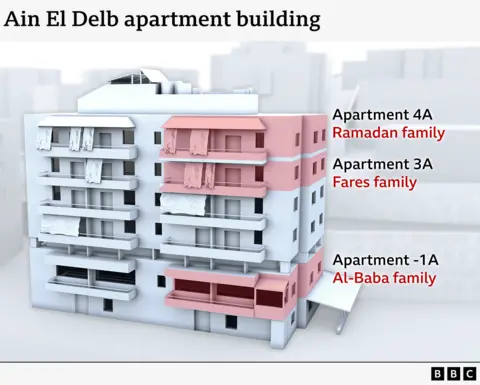
One of the Hezbollah fighters we identified was Batoul's husband, Mohammed Fares. Batoul told us that her husband, like many other men in southern Lebanon, was a reservist for the group, though she added that he had never been paid by Hezbollah, held a formal rank, or participated in combat.
Israel sees Hezbollah as one of its main threats and the group is designated a terrorist organisation by Israel, many Western governments and Gulf Arab states.
But alongside its large, well-armed military wing, Hezbollah is also an influential political party, holding seats in Lebanese parliament. In many parts of the country it is woven into the social fabric, providing a network of social services.
In response to our investigation, the IDF stated: "The IDF's strikes on military targets are subject to relevant provisions of international law, including taking feasible precautions, and are carried out after an assessment that the expected collateral damage and civilian casualties are not excessive in relation to the military advantage expected from the strike."
It had earlier also told the BBC it had executed "evacuation procedures" for the strike on Ain El Delb, but everyone we spoke to said they had received no warning.
UN experts have raised concerns about the proportionality and necessity of Israeli air strikes on residential buildings in densely populated areas in Lebanon.
This pattern of targeting entire buildings - resulting in significant civilian casualties - has been a recurring feature of Israel's latest conflict with Hezbollah, which began when the group escalated rocket attacks in response to Israel's war in Gaza.
Between October 2023 and November 2024, Lebanese authorities say more than 3,960 people were killed in Lebanon by Israeli forces, many of them civilians. Over the same time period, Israeli authorities say at least 47 civilians were killed by Hezbollah rockets fired from southern Lebanon. At least 80 Israeli soldiers were also killed fighting in southern Lebanon or as a result of rocket attacks on northern Israel.
The missile strike in Ain El Delb is the deadliest Israeli attack on a building in Lebanon for at least 18 years.

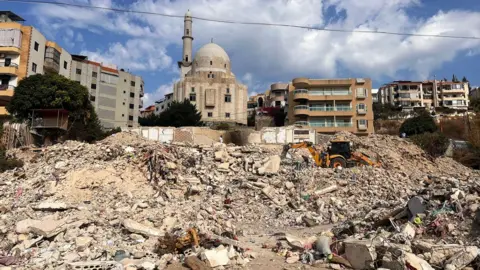 Scarlett Barter / BBC
Scarlett Barter / BBCThe village remains haunted by its impact. When we visited, more than a month after the strike, a father continued to visit the site every day, hoping for news of his 11-year-old son, whose body had yet to be found.
Ashraf Ramadan, too, returns to sift through the rubble, searching for what remains of the memories his family built over the two decades they lived there.
He shows me the door of his wardrobe, still adorned with pictures of footballers and pop stars he once admired. Then, he pulls a teddy bear from the debris and tells me it was always on his bed.
"Nothing I find here will make up for the people we lost," he says.
Additional reporting by Scarlett Barter and Jake Tacchi

© Amit Elkayam for The New York Times

(德国之声中文网)“中国正在运营巴拿马运河。而我们并没有把运河交给中国,我们是交给了巴拿马,现在我们将把它拿回来。”在周一(1月20日)的第二任期就职演说中,美国总统特朗普正式给出了要夺回巴拿马运河的“最重要”的理由。
在美国各大主流媒体中,这个理由在很大程度上被忽略掉了。同样被忽略的,还有特朗普当晚在白宫签署总统行政令时,再次提及俄罗斯和中国通过格陵兰岛对国际安全的威胁:“到处都是俄罗斯的船只,到处都是中国的船只、军舰,而且他们(丹麦)无法维护它。”
特朗普的领土扩张计划中,还包括吞并加拿大,将其变为美国的第51州,以及将墨西哥湾更名为“美洲湾”。此二者虽然没有明确提及中国和俄罗斯,但是维护国家安全也是一条重要的理由。
此前,特朗普在回答记者问题时表示,不会排除动用军事力量取得巴拿马运河和格陵兰岛的控制权。
已经有专家指出,特朗普的领土野心,不仅仅是脱口秀节目中的一个笑话,而是值得重视的政治议程。我想进一步指出,特朗普构想的美国、中国和俄罗斯之间的关系,或者说他、习近平和普京的之间关系,同样是一个耐人询问的严肃问题。
巴拿马运河和TikTok
首先,特朗普声称中国和俄罗斯的势力扩张,其描述并不准确,但也并非完全是信口开河。
2017年,巴拿马结束了和台湾的外交关系,成为中国的正式邦交国。同年,巴拿马成为首个与中国签署共建“一带一路”合作谅解备忘录的拉美国家。此后,中国和巴拿马的经济合作突飞猛进。虽然目前中国通过巴拿马运河的运输量仅有美国的三分之一,但是已然是位居全球第二位。中国还与巴拿马其他城市和港口存在广泛的合作关系。
格陵兰岛亦非净土。据报道,中国和俄罗斯正在积极扩大在北极地区的经济和军事影响力。俄罗斯导弹飞向美国的最短路线是通过北极和格陵兰。中国自称是“近北极国家”,将北极纳入其“一带一路”倡议,提出打造包括格陵兰岛在内的“冰上丝绸之路”。
但是,特朗普真的在意俄罗斯和中国的扩张吗?他希望他一再声称“关系很好”的普京和习近平两个独裁者(以及他念念不忘的朝鲜独裁者金正恩)垮台吗?
让人困惑的是,跟巴拿马运河和格陵兰岛相比,中国政府通过TikTok对美国安全的威胁更加显而易见,而且经过了美国国会和最高法院的认定——在美国已经通过法律要求TikTok“不卖就禁”之后,特朗普却在再次上任的第一天就签署行政命令,不惜对抗法律,要做TikTok的“拯救者”。
值得一提的是,TikTok案件的焦点不是言论自由,而是“数据收集”,以及其数据可能被专制政府掌控。
跟巴拿马运河和格陵兰岛相比,香港的自由和台湾的独立对美国的安全也更加显而易见,但是特朗普在第一任期内眼睁睁看着中共全面摧毁香港的自由和繁荣,并多次表示美国对台湾保护的不确定性。
当年,在特朗普的工具箱中,关税对中国经济的影响其实雷声大雨点小。跟随后中共自己对中国私营企业的粗暴打压以及疫情“清零”政策的严厉封锁相比,关税对中国经济的破坏几乎不值一提。
很多特朗普的支持者将他比作上世纪八十年代的美国总统里根,并声称他将像里根打败苏联一样击败对手。他们似乎忘了,里根总统一再嘲笑苏联的专制制度,并高举美国民主自由的旗帜,特朗普对此显然没有兴趣,人们甚至发现他对独裁者心向往之。
声称不惜使用武力侵吞邻国,扩张领土,特朗普无疑是在和普京侵略乌克兰、习近平威胁台湾以及金正恩恐吓韩国互相唱和。
《一九八四》与“人类命运共同体”
我并非不知道特朗普是民主选举产生的国家领导人,不能和习近平和普京相提并论。但是,如果以帝国扩张的方式让某国更强大,谁都可能成为专制国家的“朋友”——准确地说,亦敌亦友。
人们在解读奥威尔的小说《一九八四》的时候,多半聚焦于其对专制政权在一国之内所作所为的描述——大洋国政府对本国公民的暴力胁迫、思想改造和结构性控制。这也的确是小说的重点。但是,我们不能忽略,奥威尔为这个极权国家的存在构想了一幅世界图景。可以说,没有这样的世界图景,就没有专制政权的长期存在和“完美”运作。
小说中,整个世界被三个超级大国瓜分,即大洋国、欧亚国与东亚国。三个国家均实行高度集权统治,统治方法也大同小异:改造语言、篡改历史、盯梢告密和囚禁酷刑等等。
还有一种统治手段不可或缺,那就是塑造外部敌人。“这三个超级国家永远是拉一个打一个,与这个结盟,与那个交战”,“但是战争已不再象二十世纪初期几十年那种的你死我活的毁灭性斗争,而是交战双方之间的目标有限的交锋,因为双方都没有能力打败对方,也没有打仗的物质原因,更没有任何真正意识形态上的分歧”,“三个超级国家中的任何一国都不可能被任何两国的联盟所绝对打败”。
三个国家都实施仇恨教育,例如大洋国的仇恨周:“仇恨周已进行了六天,在这六天里,天天是游行,演讲、呼喊、歌唱、旗帜、标语、电影、蜡像、敲鼓、吹号、齐步前进、坦克咯咯、飞机轰鸣、炮声隆隆。在这六天里,群众的情绪激动得到了最高峰。”
然而,奥威尔写道,三个超级国家不仅不能征服对方,而且征服了也没有什么好处。相反,“只要它们继续冲突,它们就等于互相支撑,就象三捆堆在一起的秫秸一样”。
天才的奥威尔早就预见到专制国家推销的“人类命运共同体”。
作者长平是中国资深媒体人、时事评论作家,六四记忆 · 人权博物馆总策展人,现居德国。
德国之声致力于为您提供客观中立的新闻报导,以及展现多种角度的评论分析。文中评论及分析仅代表作者或专家个人立场。
© 2025年德国之声版权声明:本文所有内容受到著作权法保护,如无德国之声特别授权,不得擅自使用。任何不当行为都将导致追偿,并受到刑事追究。

© Al Drago for The New York Times

© Doug Mills/The New York Times

© Kenny Holston/The New York Times

© Manuel Balce Ceneta/Associated Press

© Mary Conlon/Associated Press

© Mark Abramson for The New York Times

© Erin Schaff/The New York Times

© Chicago History Museum/Getty Images

© Elliott Verdier for The New York Times

© Desiree Rios for The New York Times

© Kenny Holston/The New York Times

© John Taggart for The New York Times

© Jehad Alshrafi/Associated Press

© Lucas Foglia for The New York Times

© Zack Wittman for The New York Times

© Zack Wittman for The New York Times

© Scott McIntyre for The New York Times

© Clodagh Kilcoyne/Reuters

© Dakota Santiago for The New York Times

© Hannah Yoon for The New York Times

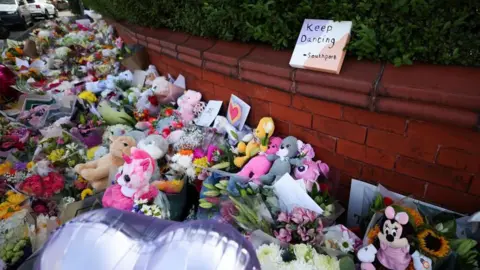 EPA
EPA"The dance club was full of laughter and excitement," is how one girl, 14, described the atmosphere as a group of 26 children gathered for a Taylor Swift-themed class in Southport.
Their summer holidays had just begun and the sun was shining down on the town as they were dropped off by their parents. As the class got under way, 29 July 2024 had all the markings of a good day.
The attack that unfolded next saw Axel Rudakubana given a minimum of 52 years in prison. At his sentencing on Thursday, details of how the incident played out from the perspectives of those involved were revealed to the public for the first time.
With the class in full swing, a taxi driver followed a passenger he had just dropped off outside after he had refused to pay.
The passenger, in his teens, was not dressed for the weather: the hood of his thick green hoodie was pulled tight around his face and he was wearing a surgical mask. Inside his pocket was a 20cm kitchen knife.
Initially, Axel Rudakubana could not figure how to get into the studio and was caught on CCTV struggling with a locked door - but then he spotted another entrance and stepped inside.
That was, as one child survivor put it, the "beginning of my nightmare".
Warning: This article contains distressing and upsetting details.
Accounts from inside the dance class confirm that Rudakubana moved calmly and purposefully.
He had been planning this moment for some time. He did not hesitate, grabbing and stabbing the girl nearest to the door as soon as he walked in.
As Rudakubana attacked, he did not say a word.
For those inside the room, it took a moment to comprehend what was happening.
"I thought the man who stabbed me was a cleaner," one of the child victims recounted.
It must be a practical joke, she thought, but later said: "I realised it wasn't a prank when I saw blood coming out of me".
Her memories of what happened next are "fuzzy", but the child said she remembers thinking: "I don't want to die, I have got to get out of here".
Another victim said the image of Rudakubana in her memory is that of a monster stalking around the studio.
In court, she would later tell her would-be killer: "The thing I remember most about you is your eyes.
"You looked possessed and you didn't look human."

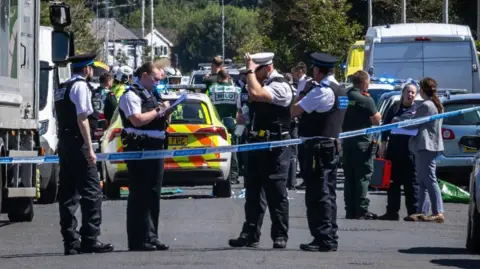 PA Media
PA MediaLeanne Lucas, who was leading the dance class, had first spotted Rudakubana outside when she went to open a window to let some air into the warm dance studio.
She thought nothing of it until the door swung open and he appeared.
What happened next, she said, left her and the girls with "scars we cannot un-see, scars we cannot move on from".
The full horror of what was unfolding only became fully clear when she was stabbed in the back. She later told the girls: "I'm surviving for you".
Heidi Liddle, who was also supervising the class, had been sitting on the floor helping the children to make friendship bracelets.
By the time she realised what was happening, the fast-moving attacker had already done unspeakable damage.
Heidi jumped into action and began trying to rush the girls towards the door.
One girl ran for a toilet on the other side of the landing and she followed.
Heidi locked the door behind them and pressed herself against it. Do not make a sound, she told the girl.
And then the door rattled. Rudakubana was still looking for victims.
Outside, she heard the screams of children who had not managed to escape.
Rudakubana set out to kill as many children as he could: by the time the 15 minute frenzy was over, two girls were dead and one was dying.
Another eight children and two adults had been stabbed. Some were fighting for their lives.
If it was not for the quick-thinking and bravery of the girls, it is certain that more would have died.
One child remembers the world seeming to move in "slow motion" as Rudakubana moved towards her, attacking her friends as he made his way across the room.
Instinct kicked in.
She remembers "physically pushing" her friends who were still able to run as they fled down the stairs.
When she confronted Rudakubana in court by reading her statement, she told him: "I knew I was running for my life.
"I knew from your eyes you wanted to try to kill us all."
When he was sentenced, the judge concluded that if Rudakubana had been able to, he would have killed each and every child present - and anyone else who got in his way.

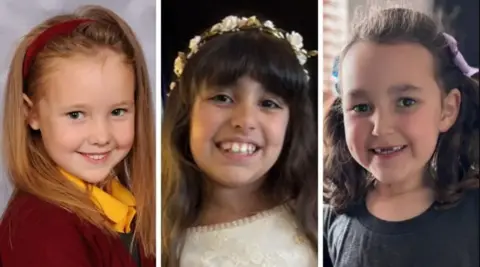
One of the children who survived that day was stabbed 30 times. She was airlifted to hospital and doctors operated on her for six hours to try and save the use of her arms, hands and fingers.
"She watched two of the girls die," her parents told investigators.
On one occasion during her recovery, the child told her parents: "I don't know who I am anymore."
But six months on, she is fighting back. Her mother said: "We could never be more proud of what she has achieved over the last six months.
"He has completely failed to destroy her spirit, her amazing sense of humour, her fierceness and her pure beautiful heart."
The Southport survivors are slowly rebuilding their lives.
Investigators who dealt with the case said they were staggered by their spirit and resilience.
That was on full display when one girl was asked what she says when her classmates ask if she wishes she had not been there that day.
"In some ways, I wish I wasn't," she tells them.
"But also, if I wasn't there, someone else would have been stabbed and they could have died - so I'm glad I might have stopped someone else getting hurt."